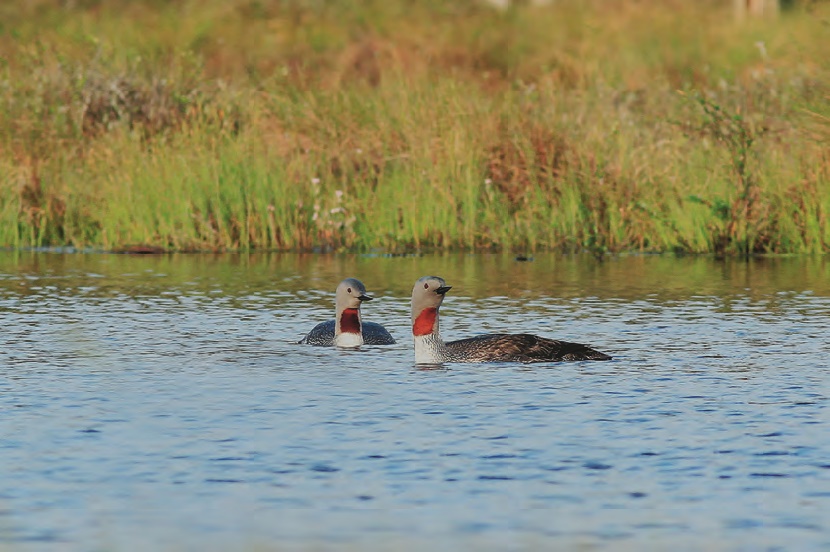Does the breeding performance differ between solitary and colonial breeding Red-throated Loons Gavia stellata in the core area of the Swedish population?
DOI:
https://doi.org/10.34080/os.v26.22509Keywords:
breeding success, Red-throated Diver, habitat selection, colonialityAbstract
Most Red-throated Loons Gavia stellata are solitary breeders in small pools and provide fish prey to the chicks from larger waters at a distance seldom exceeding 10 km. More rarely, several pairs nest together in colonies. We compared the breeding performance of solitary and colonial breeders in South-central Sweden during 2000–2016 (except for 2007). Annual productivity was 0.63 and 0.52 chicks per pair and year for solitary and colonial breeding pairs respectively, and mean percentage per year of broods with two chicks did not differ, 24% and 18% (no significant differences). Average hatching probability was the same, 0.576 and 0.581 over years. The average probability however, that at least one chick would be fledged was significantly higher among solitary pairs, 0.915 and 0.731 respectively, although the overall probability of successful breeding did not differ, 0.530 and 0.443. Thus, any benefit with reference to coloniality can be questioned. More likely, colonial breeding was a result of habitat selection, with a concentration of several nesting pairs within a relatively small area with a profitable foraging lake nearby.
Downloads

Downloads
Published
How to Cite
Issue
Section
License
The copyright of each contribution belongs to the author(s), but all contributions are published under a Creative Commons license, so that anyone is free to share and reuse the contribution as long as the copyright holder is attributed.







